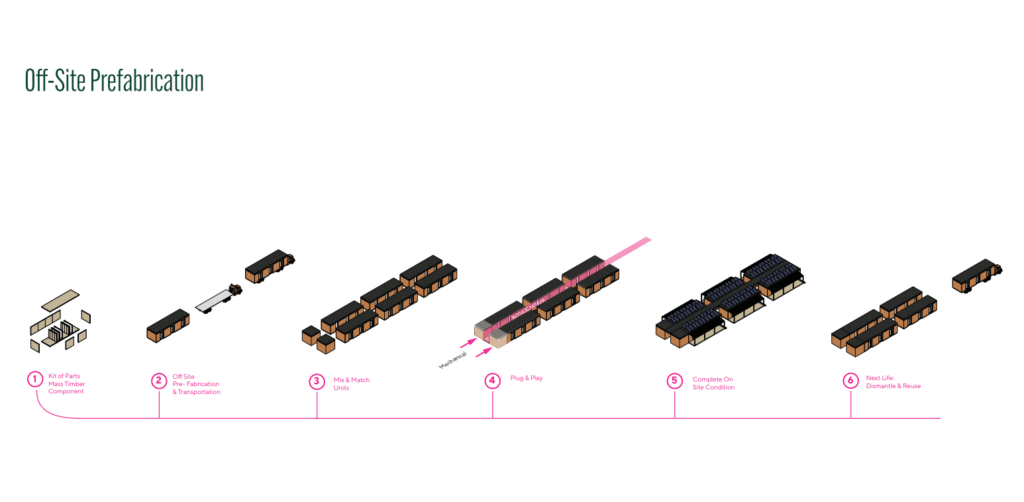Cross-laminated timber has emerged as the material of choice for a new mine in Canada.
The study, commissioned by the Thunder Bay Community Economic Development Commission, outlines several benefits of using mass timber over traditional construction on remote mine sites.
According to Jamie Taylor, CEO of the commission, the study presents, for the first time, “a compelling case for mass timber as the cornerstone for mineral development.”
The report, supported by the Thunder Bay-based Centre for Research and Innovation in Bio-economy (CRIBE), focused on using mass timber construction systems for the mining establishment infrastructure.
CBIRE is leading the charge towards making the Ontario province a forest bio-economic powerhouse and has channelled investment into its bio-economy.
Mass timber construction, according to Chris Walton, the CEO of CRIBE, “presents a tremendous opportunity for the mining and resource development sectors to reduce their carbon footprint and project timelines.”

Substituting steel and concrete for mass timber has been found to reduce emissions by 40%, whilst the report said mass timber’s “intrinsic long-term salvage value outperforms conventional lightweight construction.”
It also found that its advantage was reinforced “by its more enduring and resilient structural system, which makes multiple relocations possible without degradation.”
“This study brings forestry and mining together and illustrates the multifaceted benefits of mass timber in the construction of workforce and mining camps,” Mr Taylor said.
The report also found that the material allows for seamless disassembly, which means the systems could be easily repurposed and provide greater flexibility in community planning.

Supporting the findings, the Thunder Bay Community Economic Development Commission has developed a prototype design for modular living quarters and auxiliary structures.
These include plug-and-play mechanical and electrical systems, which are highly adaptable and easily relocated without compromising structural integrity.
Amongst recommendations from the study include engagement with stakeholders from both industry sectors to drive the adoption of mass timber for new infrastructure and allocating resources for further studies and prototyping.






